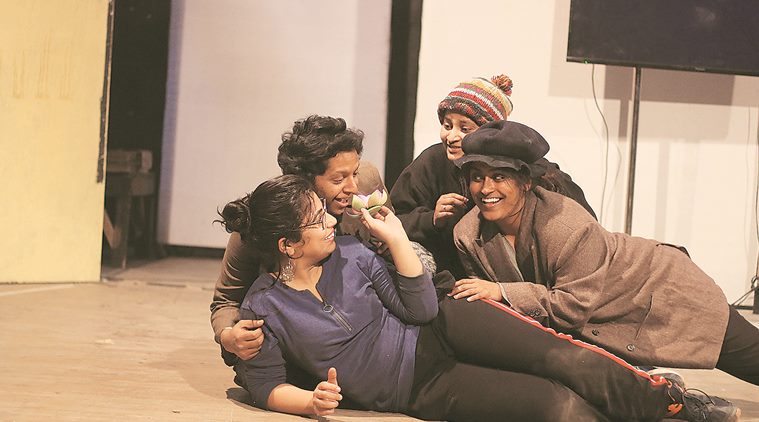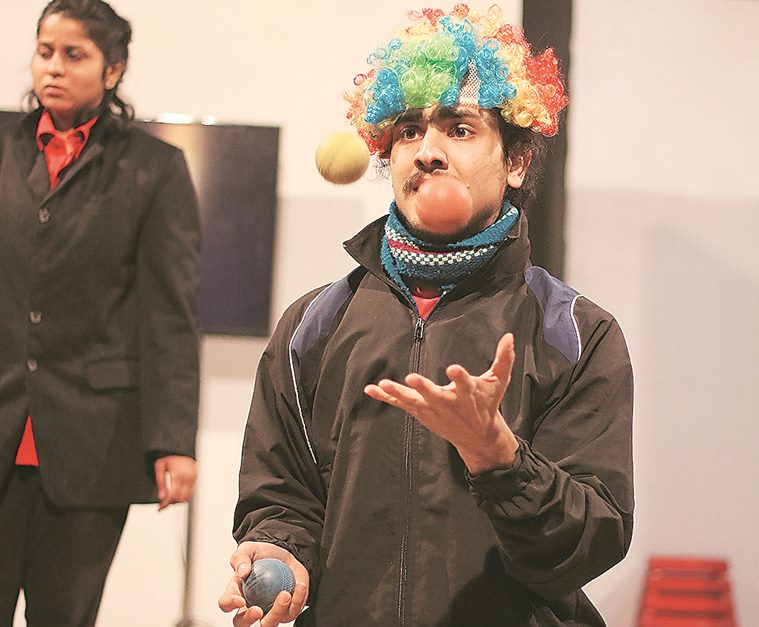Written by Dipanita Nath |Updated: January 24, 2019 8:43:20 am
Director Abhilash Pillai on exploring the mind of an artist in Blindside
Abhilash Pillai’s experiments have ranged from the brilliant Midnight’s Children to the middling Talatum: The Circus to the insipid Lorem Ipsum. Now, the Delhi-based director and final year students of the National School of Drama (NSD) in Delhi are presenting Blindside, based on Sreemoyee Piu Kundu’s novel called Cut.

You can’t accuse Abhilash Pillai of playing safe. Every production attempts to leap out, even at times when it doesn’t quite know where to land. Pillai’s experiments have ranged from the brilliant Midnight’s Children to the middling Talatum: The Circus to the insipid Lorem Ipsum. Now, the Delhi-based director and final year students of the National School of Drama (NSD) in Delhi are presenting Blindside, based on Sreemoyee Piu Kundu’s novel called Cut.
The plot revolves around Amitabh Kulshrestha, a theatre director with a significant body of work, and the dynamics of his world, especially his relationship with two women. “I thought, why not go for a fictional biography that we can explore with students. The nation talks about Kulshrestha’s work but his wife just hates him. His relationships with other women is ambiguous. This whole thing of being an artist gives you freedom in society. It is also a privilege if an artist has a focus and wants to make a point about society. Freedom has to be used properly to create an art; if you misuse it, you create mediocre art,” says Pillai. Excerpts from an interview with him:
What drew you to this subject?
One of the points of my interest was the circus. In Cut, the circus does not come as a performance but as a narrative. There were two other things that were of interest to me — one was the anecdotes of theatre that come in the book, such as sedition charges on the main protagonist. Then, there was the theme of not having a centralised, mainstream theatre in India — which I don’t think should be there — due to which we have issues such as one cannot earn bread and butter from making theatre a profession in this country. Also, I have wanted to work with an autobiography for a long time. At some point, I want to take up the story of BV Karanth. I have been his student and known him closely from the time I was very young to when I was in School of Drama, Thrissur, and again at NSD. When I started my teaching career at NSD, my next roommate was Karanthji for a very long time. I used to go for morning walks with him and he used to really share his feelings about not having a child, his marriage and so on. I used to think, ‘This man created such great theatre and was part of theatre of roots, but, at the same time, his personal life was on a different trajectory. The ideology that was there in theatre was contradictory and came into conflict when we see his personal life.’ This was something that was quite interesting as an artist.

The protagonist has been accused of sedition and qualifies as an urban Naxal.
How do you present this part since you are working at NSD?

The book has references to urban Naxals only in some paragraphs. Amitabh has sedition charges and talks about it in the court. I have only kept whatever is there in the book. If the book had gone deeper into the issue, I would have gone deeper as well. The book is about a theatre person’s biography and issues like urban Naxals are there but there are other narratives such as virtue versus wisdom.






















No hay comentarios:
Publicar un comentario